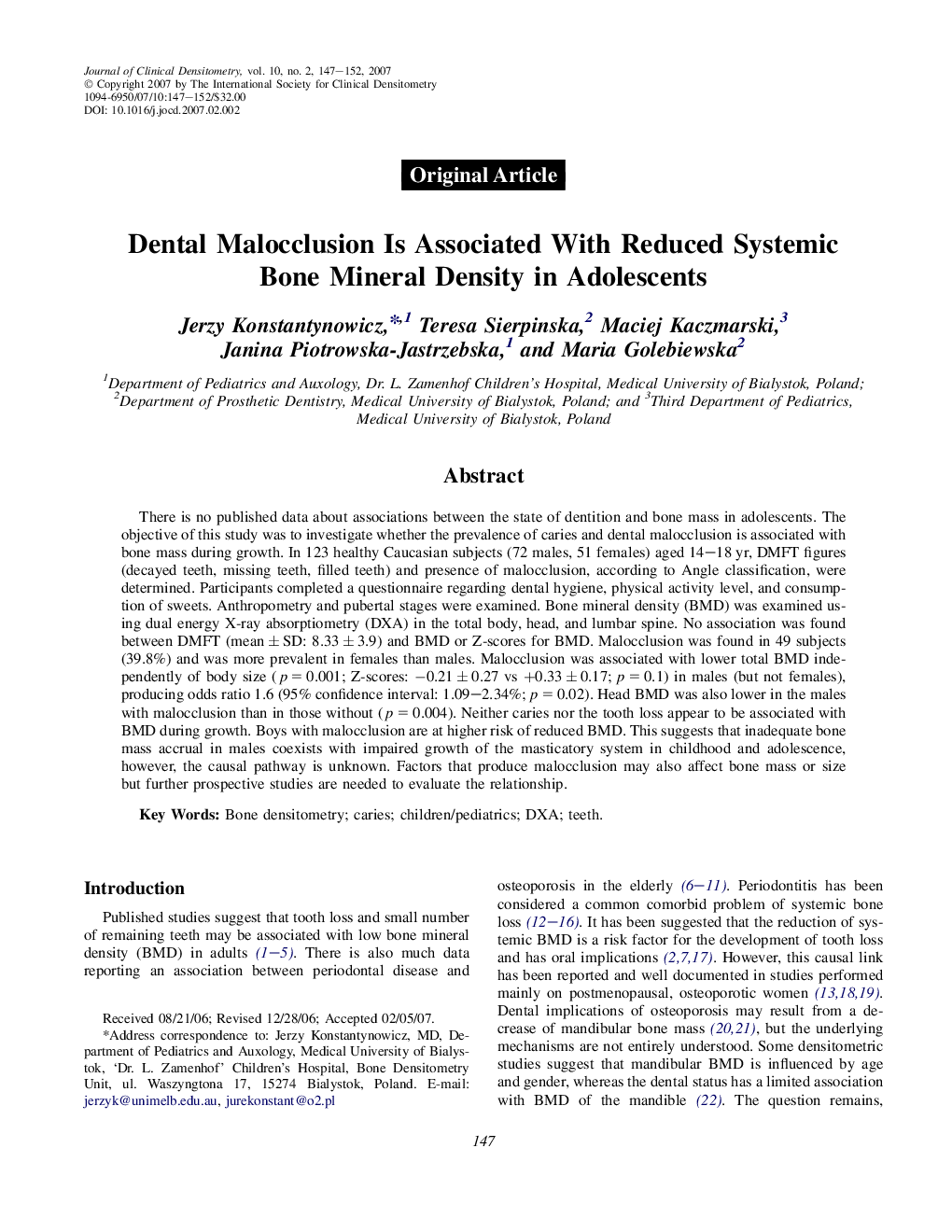| Article ID | Journal | Published Year | Pages | File Type |
|---|---|---|---|---|
| 3271724 | Journal of Clinical Densitometry | 2007 | 6 Pages |
Abstract
There is no published data about associations between the state of dentition and bone mass in adolescents. The objective of this study was to investigate whether the prevalence of caries and dental malocclusion is associated with bone mass during growth. In 123 healthy Caucasian subjects (72 males, 51 females) aged 14-18 yr, DMFT figures (decayed teeth, missing teeth, filled teeth) and presence of malocclusion, according to Angle classification, were determined. Participants completed a questionnaire regarding dental hygiene, physical activity level, and consumption of sweets. Anthropometry and pubertal stages were examined. Bone mineral density (BMD) was examined using dual energy X-ray absorptiometry (DXA) in the total body, head, and lumbar spine. No association was found between DMFT (mean ± SD: 8.33 ± 3.9) and BMD or Z-scores for BMD. Malocclusion was found in 49 subjects (39.8%) and was more prevalent in females than males. Malocclusion was associated with lower total BMD independently of body size (p = 0.001; Z-scores: â0.21 ± 0.27 vs +0.33 ± 0.17; p = 0.1) in males (but not females), producing odds ratio 1.6 (95% confidence interval: 1.09-2.34%; p = 0.02). Head BMD was also lower in the males with malocclusion than in those without (p = 0.004). Neither caries nor the tooth loss appear to be associated with BMD during growth. Boys with malocclusion are at higher risk of reduced BMD. This suggests that inadequate bone mass accrual in males coexists with impaired growth of the masticatory system in childhood and adolescence, however, the causal pathway is unknown. Factors that produce malocclusion may also affect bone mass or size but further prospective studies are needed to evaluate the relationship.
Keywords
Related Topics
Health Sciences
Medicine and Dentistry
Endocrinology, Diabetes and Metabolism
Authors
Jerzy Konstantynowicz, Teresa Sierpinska, Maciej Kaczmarski, Janina Piotrowska-Jastrzebska, Maria Golebiewska,
